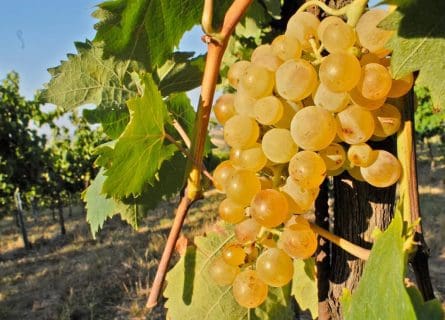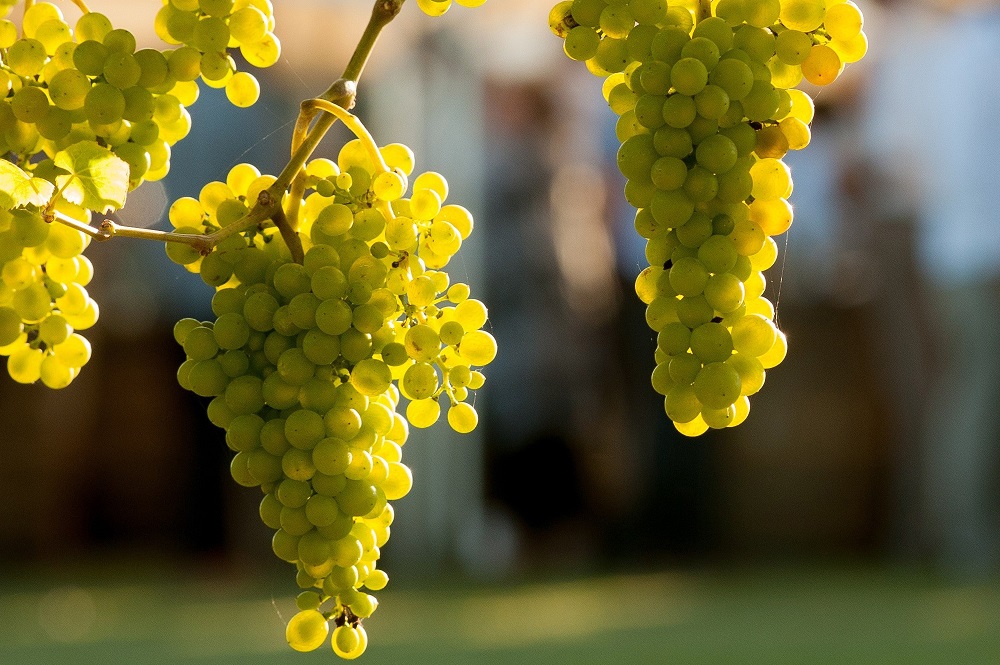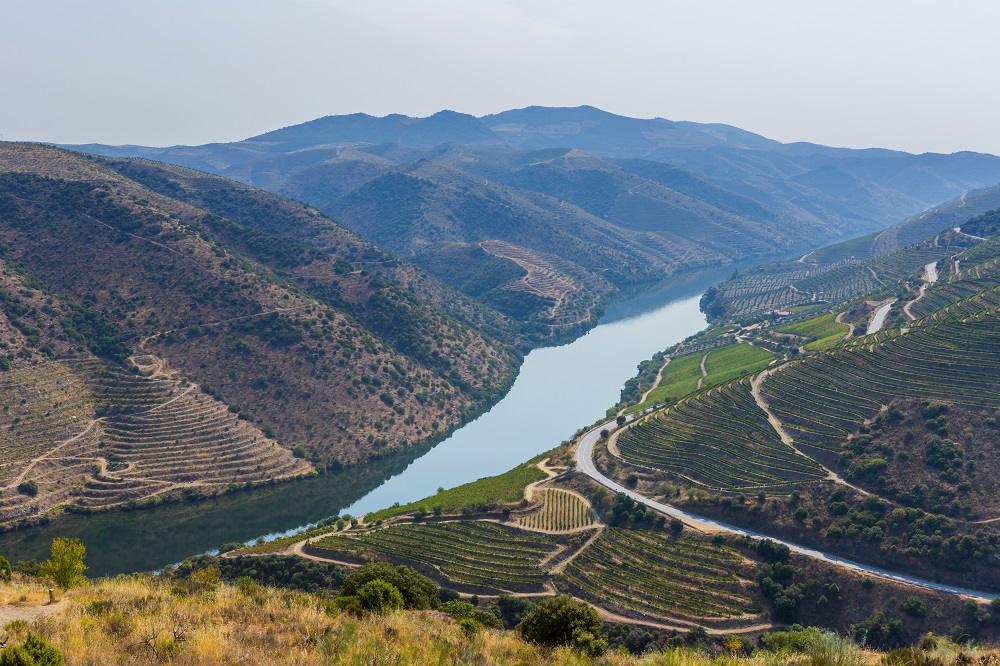
Albana Grape Variety: The Road Less Traveled
November 8, 2022
Discover Romagna Albana: A Diverse Wine Wonderland - From Sparkling Elegance to Rich Dessert Wines. Explore the Spectrum!
By: James lawrence / Last updated: February 3, 2025
Estimated reading time: 8 minutes
Time and time again, winegrowers in the Douro manage to confound our expectations. This is the home of Port: Europe’s leading sweet fortified wine. Most consumers, therefore, don’t expect to find anything else when they visit the cellars and quintas of this spectacularly beautiful region.

Guide to Portuguese White Wine: Read more
Yet the Douro is no one-trick pony. In addition to the Port wine industry, a growing volume of exceptional table wine is made in the region, including some interesting sparkling. Moreover, unlike certain parts of Italy, winegrowers in the Douro region have never embraced international varieties and ubiquitous wine styles. On the contrary – this corner of Portugal is a fertile hunting ground for obscure names in the world of wine. Rabigato, a grape indigenous to the Douro Superior, is one of the rarest of these local curiosities. So if you’re on the hunt for an esoteric gem to surprise your dinner guests, read on.
The Portuguese have a real knack for colorful grape names. The etymology of Rabigato, for instance, derives from ‘rabo de gato’ or cat’s tail. This is a longstanding reference to the small, elongated bunches that Rabigato vines typically produce in the summer months. It is one of Europe’s oldest grape varieties, first mentioned in official documents that date back to the 1500s. However, viticulturists are certain that Rabigato has been around for far longer than that!
Indeed, Roman colonization of the Iberian Peninsula in the 3rd century BC brought viticulture to almost every corner of Spain and Portugal. Their chief interest in this part of Western Europe was its huge mineral wealth and strategic position. And so Roman rule endured for over 600 years, as did their technological, cultural, and political advancements. However, the empire began to overreach itself in the 5th century, while its rulers became ineffectual and decadent. History records the official date of the Western Empire’s collapse as 476 AD, although the rot had set in many decades earlier.
This left a political vacuum that the Visigoths from northern Europe temporarily filled; the Visigoths established a short-lived capital in Toledo. But, they failed to control their territories, a fact not lost on the Moorish leader Tariq, who landed on Spanish soil in 711 AD. With a disciplined and battle-hardened army at his disposal, Tariq was able to conquer most of the peninsula within a few years. Only select parts of northern Spain and Portugal remained independent.
That small geographical advantage was carefully exploited by the Catholic monarchs, who used their bases in the north to begin a reconquest of the peninsula. By 1147, they had retaken Lisbon, the capital of the newly created independent kingdom of Portucale. From this point onward, the fortunes of the once-neglected Douro region began to change. Political alliance with England in the 14th century brought numerous benefits to the region’s winegrowers, not least the Treaty of Windsor. Signed in 1386, the agreement set out a liberal framework for trade between these two great naval powers.
Moreover, it encouraged English families to establish merchant businesses in Portugal, laying the foundations for the Douro’s rise to global prominence. Two centuries later, King Charles II saw an opportunity to punish his enemy France by prohibiting the import of French wines, which caused much outcry among the upper classes – patriotic or no patriotic fever! However, the merchants were all in favor of the move, seizing their chance to rebrand the Douro as England’s preferred source of fine wine. As a result, many famous English families, such as Taylor’s, founded wine businesses in the 1600s. They chose the (then) run-down district of Vila Nova de Gaia as their base of operations, shipping barrels of wine from their farms in the Douro’s heartland.
The 18th century was a golden age for the winegrowers of the Douro. Fortification became established as the defining feature of Port wines, ensuring that they could survive the sea journey to northern Europe without turning rancid. But there was plenty of activity in the vineyards: growers constructed spectacular stone-walled terraces, many of which survive today in these UNESCO World Heritage Sites. In 1756, meanwhile, the Douro became the first wine zone to have its geographical limits demarcated under law.
However, its fortunes took a nose dive in the 1800s: Napoleon’s invasion halted wine exports, while the phylloxera louse laid waste to the region’s vineyards in the second half of the century. Many decades later, the twin lures of efficiency and cost-cutting encouraged some growers to bulldoze their old single-file terraces and replace them with wider terraces (patamares) supported by banks of schist. This was primarily done to facilitate the mechanization of vine pruning, something which is very popular with volume producers.
Nevertheless, quality remains the overriding goal for many winemakers in the Douro Valley. In recent years, many properties have also embraced a new vocation: exceptional table wines. Traditionally, table wines were an afterthought in the Douro, made from discarded grapes used to make Port. However, as the market for high-quality white wines has exploded, so has the interest in using grapes like Rabigato to make dry styles. Unfortunately, the variety can be challenging to grow – Rabigato is susceptible to powdery and downy mildew, which can significantly reduce the yield in difficult years. Yet excessive vigor is not usually a problem – neither is an inflated yield. On the contrary: Rabigato can be relied upon to deliver a moderate crop of small, green-yellow berries that keep their acidity even in hot vintages. For that reason, the grape has become increasingly popular as a blending component in Douro table wines.
Conventional wisdom dictated that Rabigato’s primary role was to bring acid and structure to white blends; few winemakers regarded the grape as worthy of standalone status. It is also used to make white Port, mixed with a (typical) concoction of Gouveio, Viosinho, and Malvasia. But, attitudes have softened in the 21st century to the point that several leading winemakers are marketing a mono-varietal Rabigato label. The best of these are excellent: fragrant, fresh, and very attractive white wines. They tend to offer an enticing bouquet of citrus, acacia, stone fruit, and minerals, with a salt-licked finish that defines all good Douro whites.
However, it is made in very different ways. Indeed, the choices – and arguments – start the moment the grapes come into the winery. Should you crush the berries before pressing or use whole bunches in the press? Is it better to emphasize protective handling, or is a well-judged degree of skin contact beneficial to the wine? Most importantly, should you involve oak in the winemaking process?
These choices – particularly the issue of barrel maturation – will have a major impact on style, although not necessarily on quality. The truth is that Rabigato is quite a malleable grape, able to cope with (almost) anything that the winemaker can throw at it. Many, however, elect to treat it like Riesling: cool fermentation in stainless steel tank and not a hint of oak. The result is a very saline and refreshing wine – textbook for the modern palate. Yet it also takes to barrel maturation with relish, producing something more structured and age-worthy. The trade-off, as ever, is upfront fruit.

The Douro Valley boasts a sizable fan club: oenophiles, thrill seekers, gastronomes, and, yes, people looking for the perfect Instagram pic. Traditionally, the hub of activity – both for tourism and viticultural – was centered around the sub-region of Cima Corgo and the beautiful town of Pinhão. Today, Cima Corgo remains the heartland of Port and table wine production, with the greatest concentration of the best climats (vineyard sites). However, the search for new terroirs and a vastly improved infrastructure have led growers into the easterly expanse of the Douro Superior.
Amazingly, this part of the Douro Valley has only been connected to Spain by road since the 1980s. It is spectacular – a dramatic canyon of rock and vine carved by the river over the centuries. This is the so-called Douro Superior, an arid expanse of vineyards that, surprisingly enough, is the home of Rabigato in Portugal. Yet despite its continental climate (average rainfall 500 mm per annum), the Douro Superior has a knack for producing racy and pungent dry whites. For that reason, the easternmost part of the valley has witnessed a flurry of activity over the past decade, with new investments, plantings, and wineries popping up.
However, the most prized vineyards are found in the cooler, elevated terraces that flank the Douro’s left bank, a stone’s throw away from the Spanish border. It is perhaps the greatest place to make white wines in the Douro – a ready supply of irrigation from the river ensures that drought-ravaged summers can be managed. At the same time, the higher altitudes help preserve the grapes’ acidity. It is here, on these steep, schist-covered slopes, that Rabigato scales the heights.
As you expect, styles vary enormously, depending on the grapes’ provenance and the winemaker’s intentions. Yet, there is a universal theme that defines contemporary Douro whites. Whether sampling an unoaked blend or a single-varietal wine matured in barrique, Rabigato has an unrivaled ability to refresh and delight your palate. In the often torrid summers of northern Portugal, that’s worth its weight in gold.
If you would like us to customize an exclusive luxury tour, contact us and let us know your travel plans. We offer luxury food and wine tours for private groups of a minimum two guests. In addition, all of our private, chauffeured tours are available year-round upon request.

